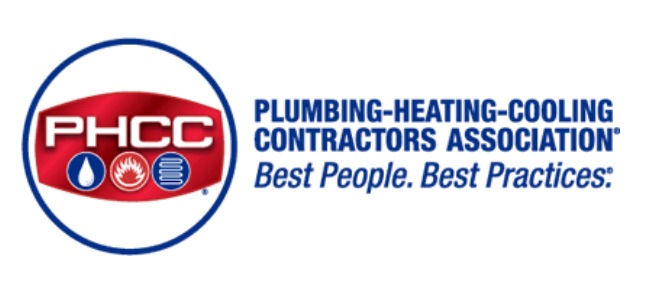The quality of air we breathe indoors is just as important as the air we breathe outdoors. Unfortunately, many homes have indoor air pollution levels that are higher than outdoor levels. This is because homes are tightly sealed to save energy, and consequently, they trap pollutants inside. Here are some of the major pollutants of a home’s indoor atmosphere.
1. Volatile Organic Compounds (VOCs)
Volatile organic compounds are a group of chemicals that are emitted as gases from certain solids or liquids. VOCs are emitted by a variety of common household products such as cleaning supplies, paints, and adhesives. In addition, they can also come from other sources such as automobiles and dry cleaners. VOCs are especially harmful to human health because they can easily be inhaled.
Once inside the body, they can cause a variety of health problems, including headaches, nausea, and respiratory problems. In extreme cases, long-term exposure to volatile organic compounds has been linked to cancers of the liver, kidneys, and blood. For these reasons, it is important to take steps to reduce the level of VOCs in your home. Some simple ways to do this include ventilating rooms where you are using products that contain VOCs and choosing low-VOC products whenever possible.
2. Radon (Rn)
Radon is a colorless, odorless, radioactive gas that occurs naturally in the environment. It is produced by the breakdown of uranium in rocks and soil, and it can enter homes through cracks in the foundation or other openings. Radon is a health hazard because it can build up to high levels in enclosed spaces, and exposure to high levels of radon has been linked to lung cancer. The risk of lung cancer from radon exposure increases with both the level of radon and the length of time of exposure. However, the risk of lung cancer from radon exposure can be reduced by taking steps to reduce radon levels in the home.
3. Asbestos
Asbestos is a naturally occurring mineral fiber that has been used in a variety of commercial and industrial applications for many years. It is recognized as a leading cause of mesothelioma, a rare and aggressive cancer that develops in the lining of the lungs. Asbestos fibers are also known to cause other health problems, including lung cancer and asbestosis (a chronic lung disease).
Although asbestos was once widely used in insulation, flooring, shingles, textiles and other products, its use has been dramatically reduced in recent years due to health concerns. Today, asbestos is most commonly found in older homes and buildings. When these materials deteriorate or are disturbed, asbestos fibers can be released into the air, where they can be inhaled by people nearby. This exposure can lead to serious health problems, so it is important to be aware of the risks associated with asbestos and take steps to avoid exposure.
4. Biological Pollutants
Biological pollutants, also known as bioaerosols, are tiny particles of living or once-living organisms that are suspended in the air. Common sources of bioaerosols include mold, dust mites, pet dander, and pollen. Bioaerosols can also be released into the air when we breathe, sneeze, or cough. While most bioaerosols are relatively harmless, some can cause serious health problems. For example, exposure to mold spores can trigger allergies and respiratory infections, while exposure to certain types of bacteria can lead to food poisoning.
In people with weakened immune systems, bioaerosols can even cause serious and potentially fatal infections. As a result, it is important to take steps to reduce the level of bioaerosols in your home. Some simple measures include regularly cleaning surfaces that collect dust, using air filters to remove allergens from the air, and vacuuming carpets and upholstered furniture regularly.
5. Formaldehyde
Formaldehyde is a colorless, flammable gas at room temperature and has a strong, distinct smell. Formaldehyde is produced naturally by all animals as part of their metabolism, but most exposure to formaldehyde comes from man-made sources. Formaldehyde is used in many household products, such as glues, adhesives, pressed-wood products, and insulation materials. It is also used in funeral homes as an embalming fluid. When these products are used or stored indoors, formaldehyde can be released into the air.
Formaldehyde exposure can cause irritation of the eyes, nose, and throat. In some people, it can cause asthma attacks and difficulty breathing. Some studies have also suggested that formaldehyde exposure may increase the risk of certain types of cancer. To reduce your exposure to formaldehyde, choose household products that contain little or no formaldehyde and ventilate your home well when using these products.
6. Nitrogen Dioxide (NO2)
Nitrogen Dioxide (NO2) is a colorless, odorless gas that is produced when various fuels are burned. It is released from power plants, car exhausts, and other sources of combustion. NO2 can cause a variety of health problems, including respiratory irritation, coughing, and difficulty breathing. In extreme cases, it can lead to pulmonary edema. NO2 is especially dangerous for children, the elderly, and people with respiratory conditions such as asthma. For these groups of people, even short-term exposure to high levels of NO2 can be life-threatening.
Fortunately, there are things that people can do to reduce their exposure to this harmful pollutant. Indoor air quality can be improved by ventilating homes and businesses with fresh air, using HEPA filters to remove NO2 from the air, and avoiding the use of products that release harmful chemicals into the air.
7. Lead (Pb)
Lead is a chemical element found in the earth’s crust. Although it has some benefits, lead is also poisonous and can cause serious health problems if it is inhaled or ingested. Lead exposure can damage the brain, kidneys, and nervous system. It can also cause anemia, high blood pressure, and fertility problems. Young children and pregnant women are especially vulnerable to the effects of lead poisoning.
Lead is commonly found in old paint, pipes, and solder. It can also be found in water sources that contain high levels of lead. Some industries release lead into the air, which can eventually settle on surfaces indoors and contaminate dust and soil. People can be exposed to lead by inhaling lead-contaminated air, eating food that contains lead, or drinking water that contains lead. It is important to take steps to prevent exposure to this pollutant.
8. Cookstoves and Heaters
These devices emit harmful gases and particles into the air, which can cause adverse health effects. The most common pollutant emitted by cookstoves and heaters is carbon monoxide (CO). This gas can cause headaches, dizziness, and even death in high concentrations. Additionally, cookstoves and heaters can also emit other harmful pollutants, such as nitrogen dioxide and particulate matter. These pollutants can cause respiratory problems, including asthma. Therefore, it is important to ensure that your cookstove or heater is properly ventilated to minimize the risk of exposure to these harmful pollutants.
Trust the Local Professionals
Are you in need of heating, cooling or ventilation services? At Meade’s Heating and Air, we offer a full range of installation, maintenance, and repair. To help keep you comfortable all year long, we provide 24/7 emergency repairs for situations that just can’t wait. We also offer service agreements to keep your system running smoothly. We serve Sterling, Northern Virginia, and the surrounding areas. Contact us today to discover all our technicians can do for you.




